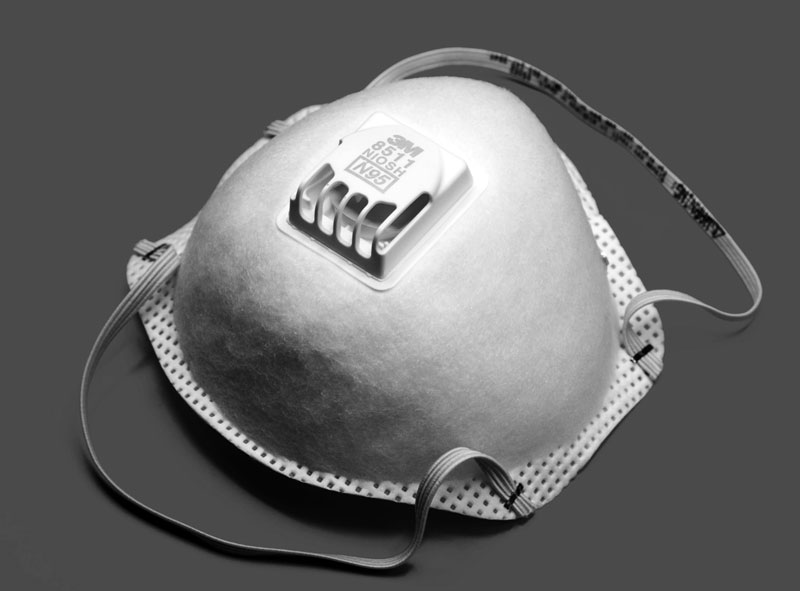Respirator filter selection guide

Choosing the appropriate respirator and accompanying filters is vital to ensure you’re protected on site. It’s important to know what kind of hazards exist, for example, particulates, dusts, vapors or a combination of these.
This understanding is key to ensuring you choose the right respirator type and the correct filters to give you the best protection.
Risk Assessment
It’s a wise idea to complete a risk assessment to understand the kind of hazards you are dealing with. Many hazardous dusts and vapours have short term exposure limits (STEL) or time exposure limits laid out by Safe Work Australia. This comprehensive list covers nearly 700 chemicals, and indicates the legal concentration limits that should not be exceeded.
Additionally, check the MSDS’s for chemicals and substances in the work area. This should provide some insight into exposure limits and the type of protection required.
Remember that the best way to use your completed risk assessment is to apply the hierarchy of workplace hazard controls and try and engineer out the hazard. Applying controls such as changing work processes and choosing alternative chemicals should be considered before PPE, which is always the last resort.
Choose your respirator
If the substances in your work environment require the use of a respirator for safe handling, it’s important to choose the right type. Respirators range from simple disposable dust masks right through to fully contained air supplied breathing apparatus. The type of tasks you are performing, how long you are doing these tasks, and of course the hazards involved will all come into play in choosing an effective respirator.
The Australian Standard AS/NZS 1715 gives guidance on the selection, use and maintenance of respiratory protective devices.
Make sure it is worn correctly!
All respirators need to be well fitted to the face to provide an effective seal. It goes without saying that an ill-fitting respirator will allow more exposure to dusts and fumes through gaps around the face and nose. Respirator fit testing is mandatory in Australia (Jaybro can provide this service on site or at our locations).
It’s also important to ensure your respirator is compatible with other PPE such as safety glasses. It’s crucial to find to find equipment that can be worn together without reducing the effectiveness of any one item of PPE.
Choose your filter
If you find yourself asking “Which respirator filter do I need?”, the information below may provide some assistance. AS/NZS 1715:2009 Selection, use and maintenance of respiratory protective equipment covers off the different types of filters, including particulate filters and gas and vapour cartridges.
Generally, a filter protects against particulates, whilst a cartridge protects against fumes.
Particulate filters
Particulate filters are classified as P1, P2 and P3. Note that P3 filters are only effective as P3 when they are combined with a full face mask that covers the eyes as well. P1 and P2 filters are generally used with half face masks that only cover the nose and mouth.
- P1 particulate filters protect against mechanically generated particulates like dust
- P2 particulate filters protect against mechanically and thermally generated particulates like welding fumes
- P3 particulate filters protect against toxic or irritant particulates when worn with a full face mask
Vapour cartridges
Vapour or gas cartridges are classified with letters A, B, E, K or a combination of these letters such as ABE or ABEK. They also follow a standard colour coding system.
These letters & colours refer to their level of protection against the following substances:
- A = Organic Vapours (Brown label)
- B = Inorganic (Acid) Gases (Grey label)
- E = Sulphur Dioxide (Yellow label)
- ABE = Organic Vapours (Brown, grey and yellow label)
- K = Ammonia (Green label)
- ABEK = organic vapours, acid gases, sulphur dioxide and ammonia (Brown, grey, yellow, green label)
- CO4 = Carbon Monoxide (black label)
- Hg5 = Mercury vapour (red label)
Respirator fit testing
In order for a respirator to provide the intended protection, it must seal tightly to the wearer’s face. AS/NZS1715:2009 states that quantitative fit testing is required before a user wears a respirator on the job. Also, fit tests should be performed annually.
To make sure you’re adequately protected, Jaybro can provide this service on-site or at your nominated location.
When should I change my cartridges?
It’s important to note that cartridges and filters have a finite life span. The service life depends on a large number of factors such as the concentration of contaminants in the work area, how humid the area is, and the ambient temperature. The user’s breathing rate also plays a part in how long a respirator filter lasts.
This means of course that it’s difficult to put a definite number on it. Your local regulations and the relevant Australian Standards should offer some insight. Additionally, when gas cartridges get towards the end of their service life, there may be a noticeable change in taste or smell for the user. On the other hand, with particulate filters, it can become harder to breathe as the filter becomes saturated with particles. Increased breathing resistance or any noticeable smell or taste are key indicators that a filter or cartridge needs changing.
A note on storage
It’s also important to realise that filters and cartridges can be easily contaminated if they are stored incorrectly. A respirator cartridge stored out in the open exposed to hazardous gases can come to the end of its useable life without ever being worn. This is because the atmospheric contaminants have an effect on the effectiveness of filters and cartridges regardless of whether they are being actively used and breathed through.
Australian Standard AS/NZS 1715 Selection, use and maintenance of respiratory protective equipment can offer detailed guidelines for storage and care of your respirator. This will ensure you get the best possible protection and extend the life of your respirator and its consumables parts.
As always, this information is provided as a guide only – always check with your Workplace Health and Safety Representative and refer to local Standards and regulations for your specific application.
 Sign In
Sign In 

